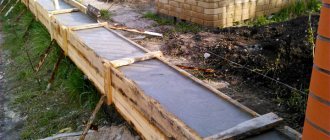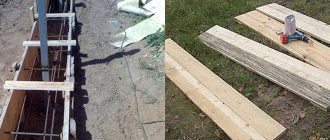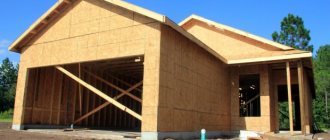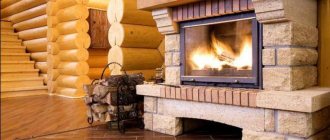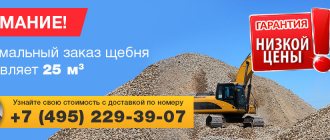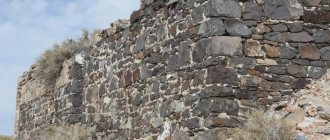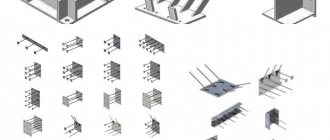When organizing work at height and preparing a workplace, one of the most difficult tasks is determining the installation locations of anchor devices, as well as selecting suitable anchor devices. The choice of installation location for the anchor device determines the potential depth of a worker’s fall in the event of a fall, a possible pendulum, the ease of performing work, and much more.
Anchor devices are a component of the safety system when working at height and are used to attach the connecting and shock-absorbing subsystem to the support. It is important to understand that connecting ropes and anchor lines using knots directly to the support is prohibited.
In this case, you do not organize a full-fledged security system.
The suitability of a particular anchor device for organizing a safety system, restraint system, positioning system or rope access is determined by the manufacturer and indicated in the operational documentation. Labor safety rules also establish restrictions:
clause 101: The anchor device of safety systems for one worker is suitable if it can withstand a load of at least 22 kN without destruction. clause 100: The anchor device of holding systems and positioning systems is suitable if it can withstand a load of at least 13.3 kN without failure.
Anchor devices must comply with the requirements of TR CU 019/2011.
Certification tests are carried out according to the methods of GOST EN 795 - 2014 and GOST EN/TS 16415 -2015. In addition, some requirements for anchor devices are specified in the Labor Safety Rules when working at height. The regulatory documentation distinguishes 5 classes (and one more subclass) of anchor devices. But by type of use there are many more of them. We will try to consider the types of devices taking into account legal requirements and methods of application.
Type B Portable temporary anchorage devices
This is perhaps the most common type of anchor device. There are a huge variety of models on the market. From the name itself it follows that such devices can be transferred from one workplace to another. Although some of the models on the market are quite heavy. Portable anchor devices can be designed for one or more users. The number of users is indicated in the operating documentation and on the product.
Types of anchor devices type B:
- Anchor slings
The most popular type of anchor devices of this type. Widely used in all types of work at height. They are used by industrial climbers to organize rope access systems and by rescuers to quickly organize an evacuation system. Anchor slings are also used for organizing safety systems, installing flexible anchor lines, installing retractable PPE, etc.
Anchor slings are usually made of textile materials or steel. When using textile slings, special attention should be paid to protecting them from damage from sharp edges of the support, as well as the possibility of damage from cutting tools or high temperatures. When used outdoors for a long time, textile slings may lose strength from exposure to UV rays.
Some slings can be used as a choke on a vertical support, while others must only be used by wrapping around the support.
- Brackets for I-beams
They are used to organize an anchor point on an I-beam when it is not possible to wrap it with a sling. Usually they are installed only on horizontal I-beams, but there are models for installation on vertical I-beams.
There are models of brackets with an integrated roller that can be used to move along an I-beam under the ceiling. Beam brackets are heavy and quite expensive, but in some situations they are absolutely irreplaceable.
I-beam brackets can be used as components of permanent anchor lines when the anchor line is made from an I-beam.
- Brackets for openings (spacer beams)
Often, when performing work at height in residential buildings (maintenance of air conditioners, setting up satellite dishes, etc.), it is necessary to organize an anchor point in the room, without access to the roof and without damaging the interior decoration of the apartment. In this case, a bracket for a door or window opening will be an excellent solution. These brackets (or spacer beams) can also be used in rescue operations, rope access systems and construction site work.
When installing devices of this type, you should carefully select the opening for installation, and avoid openings made of plasterboard and other fragile structures.
- Carbines
Yes. Carabiners are also available as anchor ones. Such carbines are marked A on the body and in the operational documentation and are called Anchor carabiners. They meet the requirements of EN 362 type A and EN 795 type B. These are usually large “mounting” snap hooks with an opening of up to 110 mm, as well as pipe snap hooks.
Some carabiners of this type can be used with a bar to remotely install an anchor device with an anchor line attached to it. This makes lifting easier and safer.
Also, anchor carabiners are installed at the ends of the slings.
- Tripods
Tripods are most often used to organize work in wells, containers, etc. They allow you to place the anchor point at a distance of up to 3 m from the ground level and ensure a comfortable descent of the worker into the container. Many tripods are designed for two users, which helps ensure the safety of not only the worker descending into the tank, but also the worker controlling the winch.
Separately, we can highlight anchor beams for concrete wells.
In addition to traditional tripods installed on the ground, you can now find versions for installation on tanks and other containers.
- Anchor posts
We have already considered this type of anchor devices as stationary. But there are models of anchor posts with quick-release fastenings for organizing temporary anchor points. Typically, anchor posts are designed for installation on supports of any cross-section with dimensions of one side not exceeding 600 mm. There are also specialized solutions for work on disconnectors and transformers and for work on sea containers. Such solutions make it possible to organize a temporary anchor line at a height of about 1 m from the level of the worker’s feet, which makes the work quite safe even at low heights.
- Specialized anchor devices for holes
Not the most common type of anchor device, but it can be quite useful. Devices of this type are poorly represented on our market and not all of them are certified according to the requirements of TR CU 019/2011. Such devices can be used when there is a hole in the support, and this is the only installation location available to us. For example, these could be holes in concrete walls and ceilings for laying communications.
- L-shaped anchor devices
They are used in cases where it is necessary to move the anchor point beyond the bend, or when it is not possible to install an anchor device (tripod) directly above the work site. They can be used when organizing work in confined spaces (CHS), for working on ladders, for working on cars and tanks, for organizing rope access systems.
The range of such devices is quite large. Many L-shaped anchor devices use a weight (counterweight) for reliable operation of the device, while others allow installation into prepared embedded elements. Now on the market there are also very compact L-shaped devices that literally fold into a suitcase.
There are also solutions integrated into a passenger car trailer (not yet presented in Russia). They allow you to transport a fairly massive device to the work site and start using it literally “from the wheels”. For stabilization, the trailer is equipped with hydraulic feet.
Advantages over traditional pole installation methods:
- The driving method eliminates the cost of concreting and excavation work, the involvement of special equipment and a large number of workers.
- Installing poles on driven foundations is not difficult and takes a huge amount of time. There is no need to wait for the concrete to harden before attaching fence sections to the posts.
- The installation of pin supports can be carried out in landscaped areas, on well-kept grass lawns, next to paths, trees and various landscape objects.
- Installation of such a foundation for a fence can be done at any time of the year, in frozen soil and in areas where soil heaving occurs due to excessively high humidity.
- The hammer-in base makes it easy to replace the fence post if necessary. The supports themselves can be removed from the ground and reused, which makes it possible to move the fence to another location.
The temptation to quickly and inexpensively install fence posts may result in rework for some developers. Therefore, before making a choice in favor of drive-in type supports, you should:
Firstly
, examine the soil at the site where the fence is installed. It is necessary to abandon a driven foundation in the case of sandy, peaty and swampy soils, as well as on too dense soils and in the presence of large stones in the ground.
Secondly
, driven bases cannot be used for massive fences and fence sections with high windage. Due to the heavy weight, the support posts can sag, and with a high wind load, the driving wedge can warp or even be pulled out of the ground.
It is advisable to use driven-in post bases for lightweight fence structures, for example, those made of chain-link mesh, welded mesh, wooden picket fence, metal lattice sections, chain and rope decorative spans. The posts of such a fence remain stable and rigid for many years.
Articles about products Updated: 09.27.2021 12:21:33
Type C and D Rigid and flexible horizontal anchor lines
Anchor lines are used in cases where it is necessary to ensure the safety of workers and their free movement in an extended working area. Retractable PPE, slings (with or without a shock absorber) or vertical flexible anchor lines are used as a connecting and shock-absorbing subsystem.
Types of devices of this type:
- Flexible horizontal anchor lines
Such anchor devices can be installed fairly quickly in the work area. Flexible anchor lines are used for temporary work on construction sites, roofing work, work on transformers, etc. Most temporary anchor lines are designed to be used by no more than 3 workers at a time, but there are models for up to 5 workers.
Most models on the market are made of textile sling or rope. Their disadvantages include the relatively large sagging of the line when a worker falls, because the lines are usually pulled by the force of the hands of one or two workers. Also, textile materials are easily damaged. The length of most textile lines does not exceed 30 meters, and according to POTRV requirements it is necessary to install intermediate anchor points every 12 meters.
To perform hot work, temporary steel cable lines must be used. They are much heavier and more expensive. But a temporary line made of steel cable can be installed for a length of up to 100 meters.
- Stationary rigid anchor lines
This type of anchor devices allows you to organize a security system in large areas, such as roofs, crane tracks, railway overpasses, oil product discharge points, etc. Rigid anchor lines are usually equipped with retractable safety equipment to organize a safety system.
Unlike other anchor devices, installation of rigid anchor lines requires preliminary design. Installation of fixed anchor lines must be carried out by competent specialists who have been trained by the manufacturer (this requirement is often specified in the operational documentation).
Rigid anchor lines are made of steel cable or metal profile. Rope systems are used only in safety and restraint systems, and anchor devices based on metal profiles can be used in positioning and rope access systems.
Most rigid anchor lines are designed to accommodate 3 to 5 users at a time.
Type E Counterweight anchor devices
Such devices are used to organize safety and restraint systems on a flat surface. They consist of a base, collapsible weights and a central column with one or two anchor points. Counterweight anchor devices can be used with flexible anchor lines, slings and retractable PPE.
Today, such devices are not very common in Russia, but they have a number of advantages. When organizing a fall arrest system on a flat roof (for example, for snow removal), the employer usually has two options - install a stationary anchor line, or install counterbalanced anchor devices. When using counterbalance devices, there is no need to carry out design and construction work, disturb the roof waterproofing, etc.
The disadvantages of these devices include their large weight and difficulty in carrying, and the impossibility of installation on slippery (snowy, wet) surfaces.
What is a driven post base?
The driven post support has the shape of a sharp cone of cross-section, in the upper part of which there is a “glass” for rigidly fastening a round or square post. The nested design of the support prevents direct contact of the post with the ground, thereby protecting the wooden posts from rotting. The cross-shaped pin of the driving support is easily buried in the soil and is firmly held in it due to the small sole for pushing out.
Use a sledgehammer or jackhammer to drive the pin bases into the ground. Hammering is done through a wooden spacer so as not to deform the socket for the stand.

